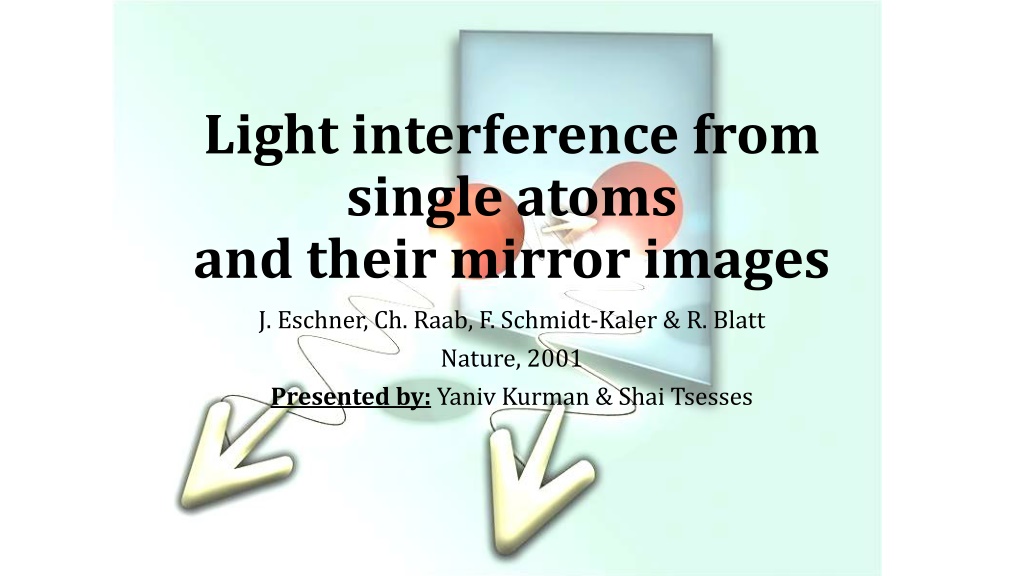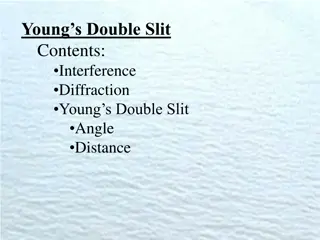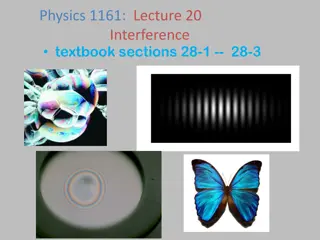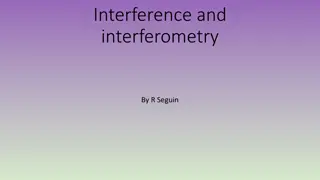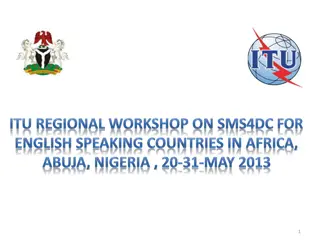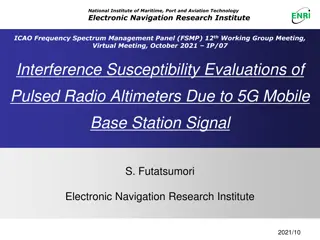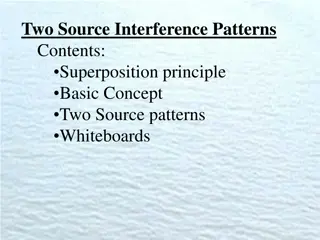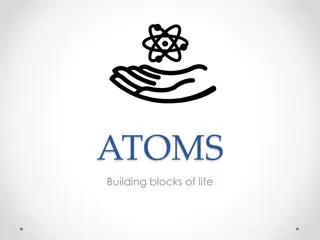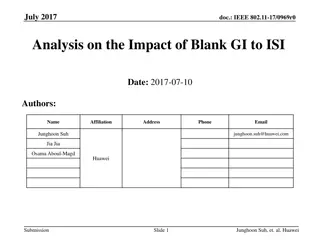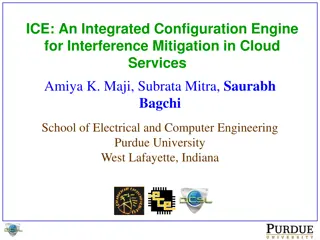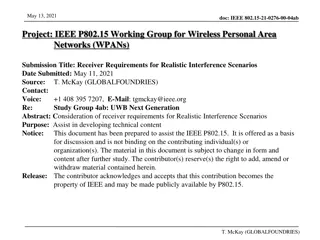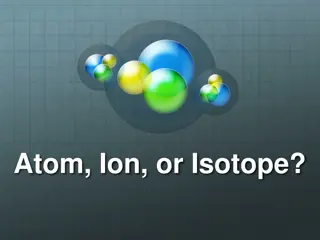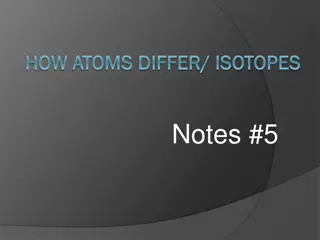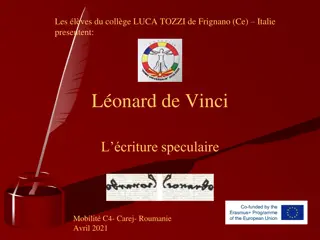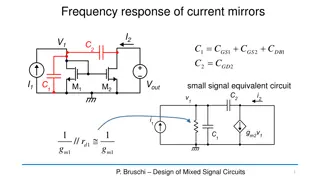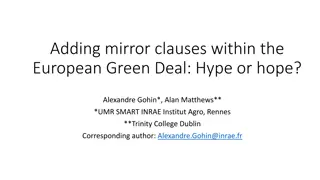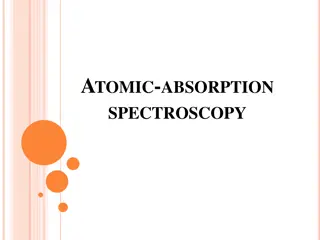Exploring Light Interference from Single Atoms and Their Mirror Images
Delve into the intriguing realm of light interference with single atoms and their mirror images, as discussed in a Nature article from 2001. The study challenges the conventional understanding of spontaneous emission and coherence, presenting experimental setups, resonance fluorescence, and the Optical Bloch Equations. Descriptions of interference using OBE and cooperative effects like superradiance provide fascinating insights into the behavior of emitters in the quantum world.
Download Presentation

Please find below an Image/Link to download the presentation.
The content on the website is provided AS IS for your information and personal use only. It may not be sold, licensed, or shared on other websites without obtaining consent from the author. Download presentation by click this link. If you encounter any issues during the download, it is possible that the publisher has removed the file from their server.
E N D
Presentation Transcript
Light interference from single atoms and their mirror images J. Eschner, Ch. Raab, F. Schmidt-Kaler & R. Blatt Nature, 2001 Presented by: Yaniv Kurman & Shai Tsesses
Introduction and motivation Introduction and motivation The semester taught us that spontaneous emission is not coherent, and therefore cannot create an interference pattern. However, If we could have interference inside the emitter: How can we tell? How would that change the emission? Can two emitters interact this way?
Experimental setup Experimental setup Resonance fluorescence Resonance fluorescence Transmit 650nm Mirror location is the only tunable parameter
How does the spontaneous emission look like? How does the spontaneous emission look like? ? /2 = 246?? Classical interference autocorrelation of a field ? = ? ? + ? ? ? ?1? = ? ? 2= 2 ? ? ? ? ? ? ? 21 + ?? ?1? 2
Optical Bloch equations (OBE) Optical Bloch equations (OBE) - - Reminder Reminder Two level atom Description ???? ???? ??? ??? ??? ??? ???? ???? ? = ????+ ???? ; ? = = Assuming dipole approximation: ? = ? ? ? + ? ? RWA - The emitted field corresponds to ? = ? ? =0 0 0 1 Description of spontaneous decay (decay of population, not coherence): ?? ? = ? Lindblad super operator : ? ?= 1 ???+ ????, ? + 0? ? 2? ?? + ?? ? 2???
Describing interference using OBE Describing interference using OBE ,C2 Separate into angles: 0 ? ? = ??/2 ?????= 1 ??? + ??? ?? 2????? 2 ??? Without the mirror :?1= ?2= 0 ?,?3= 1 2 0 ? ,C1 Adding the mirror results in operator superposition (Interference): ???????????? ????? ?1,?2 ?12= ?1+ ? ????2 01 + ? ??? ? = The measureable recombination rate: ?12= 2?1 ?1? ??? ?1 2 ? ? ?1+ 2?? 2 1 + ?? ?1? ?12
Image atom Cooperative effect Cooperative effect - - Superradiance Superradiance ,C2 The tricky part of using the Dicke method is now known ? ? ?? ??= ?1 ??/2 = + ?2 ? ??? ; ?? = ?? ?? ?? ?=1 ,C1 +?? ?,? = 0 ?1 +???? ++ ?2 + ?2 ? ??? = 0?,? ?? ?1 Again, we claim the two processes are indistinguishable = 2 0 (?1 ) ?1 + ??[(?1 ? ???) ?1 ] 2 1 + ?? ?1? 2 ? ?
Interference inside the emitter Interference inside the emitter ?1/2 Unpopulated Populated If inhibited the atom must still be excited! spontaneous emission is This can be seen from an increase in other transition rates Simultaneous recordings
Alternative view Alternative view Purcell effect Purcell effect The rate of spontaneous emission: =2? ?2?2?(?) If we place the emitter at a node\antinode of the modes created by the mirror, spontaneous emission will be drastically altered! Accounting for the measurement error, this allows locating an atom with better accuracy than the size of its ground state wavepacket!
Interference between two emitters Interference between two emitters Two emitters held and cooled separately, each of them interacts only with the reflected emission from the other Usually, cooperative effects require the emitters to be really close. Here, they are more than a million wavelengths away! These effects are reminiscent of sub- and super-radiance, as the emitters interact through reabsorption of the electromagnetic field
Summary and conclusions Summary and conclusions Interference of light can occur inside the emitter, and may allow us to accurately locate single atoms Cooperative effects between atoms, which are similar in nature to sub- and super-radiance, can occur at a very large distance There is no real difference between atom-atom interactions and the interaction of atoms and their mirror images With a fairly similar configuration, using an engineered retro-reflector, it might be possible to engineer specific multiple atom interactions Can CQED be described as interference of an emitter and its mirror images?
